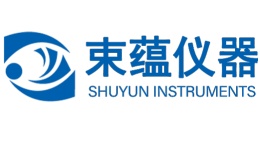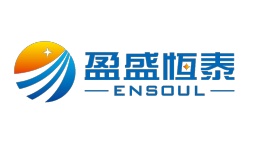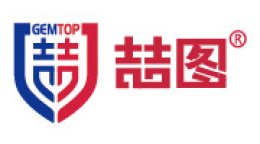方案详情文
智能文字提取功能测试中
safefu&analusis Understanding the importanceof water activity in food By Anthony j Fontana Jr. Ph.D, Senior Research Scientist, Decagon Devices ater activity is an importantproperty that can be used topredict food stability and safetywith respect to microbial growth,rates of deteriorative reactions, andphysical properties. Throughouthistory the importance of controlling water in foodto preserve and control food quality by drying,freezing, or adding sugar or salt has beenrecognised. Water activity is a measure of theenergy status of the water in a system (or thedegree to which water is "bound") and, hence, itsavailability to act as a solvent and participate inchemical and biochemical reactions and growth ofmicro-organisms. To understand this concept better, imaginetwo tanks of water, one contains 10,000 gallons ofwater and the other containing one gallon.How might water move between the tanks?The volume of water in the tanks makes nodifference. Pressure is the only predictor. Raisethe pressure of the tank containing onegallon by moving the tank up a hill. Now theone gallon of water will move toward the lowerpressure of the downhill tank, regardless of itsvolume. In the same way, water content can'tpredict the direction of moisture migration.Water activity gives the answer. One objective in food safety is to preventgrowth of and toxin production by harmfulmicro-organisms. These have a limiting wateractivity level below which they will not grow.Water activity (a), not water content, deter-mines the lower limit of available water formicrobial growth. The lowest aw levels atwhich the vast majority of food-spoilingbacteria will grow is approximately 0.90. In addition to the relationship betweenmicrobial growth and water activity, a numberof other aspects of food microbiology areinfluenced by water activity, such as sporula-tion, germination and mycotoxin production. Water activity influences not only micro-bial spoilage but also chemical and enzymaticreactions. Water may act as a solvent orreactant or change the mobility of thereactants by affecting the viscosity of the foodsystem. Water activity influences the rate andextent of nonenzymatic browning, lipid oxidation,degradation of vitamins, enzymatic reactions,protein denaturation, starch gelatinisation andstarch retrogradation. The rate of nonenzymatic browning increaseswith increasing aw, reaching a maximum at awranging from 0.6 to 0.7. Lipid oxidation rate is at itsminimum when a, has an intermediate range andincreases at both high and low aw levels, althoughdue to different mechanisms. These reactionsresult in the formation of highly objectionableflavours and odours. Water-soluble vitamindegradation in food systems increases with increasing a, levels. Enzyme and protein stability isinfluenced significantly by water activity due totheir relatively fragile natures. Water activity alsoinfluences the gelatinisation temperature andretrogradation rate of starch. In addition to predicting the rates of variouschemical and enzymatic reactions, water activityaffects the textural properties of foods. Foods withhigh aw have a texture that is described as moist,juicy, tender, and chewy. When the water activityof these products is lowered, undesirable textureattributes, such as hard, dry, stale, and tough areused. Foods with normally low a, have textureattributes described as crisp and crunchy, whereashigher aw levels may change the texture to soggy. Dry, cereal-based foods and starch-basedsnack products, such as crackers, potato chips, The AquaLab water activity monitor puffed corn curls, and popcorn, lose their sensorycrispness with increasing water activity. Excessiveand rapid drying or moisture reabsorption byglassy materials can cause undesirable conse-quences, such as product loss due to cracking andexcessive breakage. Water activity is an important parameter incontrolling water migration of multi-componentproducts. Some foods contain components atdifferent water activity levels, such as cereals withdried fruits. Unless the water activity is controlled,moisture can migrate from the highera of driedfruit to the lower a, of cereal, causing the fruit tobecome hard and dry, while the cereal becomessoggy. Water activity also is an important factoraffecting the stability of powders and dehydratedproducts during storage. Controlling water activityin a powder product maintains proper productstructure, texture, stability, density, and rehydra-tion properties, which is essential during process-ing, handling, packaging,and storage. Water activity also determines the shelf life ofproducts. Critical upper and lower water activitylevels can be established with respect to microbial,texture, flavour, appearance, aroma, nutritional,and cooking qualities of food products. Rates ofmoisture exchange through the package and therate of change in a of the food toward a criticallimit determines the shelf life of a product. The USA FDA's Good Manufacturing Practice (GMP) regulations incorporate water activityguidelines in defining food safety regulations.The purpose of GMP regulations is to detail thespecific requirements and practices to befollowed by the industry to ensure foods areproduced under sanitary conditions and arepure, wholesome and safe to eat. In the past, measuring the water activityof foodstuffs was a time-consuming anddifficult process. But new instrument techno-logies have vastly improved the speed,accuracy and reliability of measurements. Dewpoint is a primary measurement ofvapour pressure that has been used fordecades. Dewpoint instruments utilise chilled-mirror technology and are accurate, fast andsimple to use. The a, measurement rangeof commercially available dewpoint meters is0.030 to 1.000, with a resolution of ±0.001and accuracy of ±0.003. Measurement time istypically less than five minutes. In the AquaLab water activity monitor, thesample is equilibrated within the headspace ofa sealed chambercontaining a mirror, opticalsensor and infrared temperature sensor. Atequilibrium, the relative humidity of the air inthe chamber is the same as the water activityof the sample. A thermoelectric coolerprecisely controls the mirror temperature andan optical reflectance sensor detects the exactpoint at which condensation first appears, while athermocouple on the mirror accurately measuresthe dewpoint temperature. An infrared thermo-meter measures the sample temperature.Both thedewpoint and sample temperatures are used todetermine water activity. Calibration can be checked and maintained byusing a series of pre-mixed verification saltstandards whicharesupplieddwitheachinstrument. Every food producer needs to know what willhappen to their product as it sits on the shelf. Shelfstable can mean,"won't get mouldy," but it coversa lot of other food qualities as well. Take, forexample, a well known raisin bran manufacturer in the USA. Both the manufacturer and theconsumer of the raisin bran expected crunchyflakes and chewy raisins. The consumer got asurprise when he bit into a rock hard raisin andbroke a tooth. The manufacturer soon after got asurprise in the form of a lawsuit. Fortunately, notall moisture migration problems end up in a courtof law. But if you produce and sell products thatcontain discrete ingredients, you need to knowwhere the moisture will go as the product sits ona shelt. A fruitcake manufacturer wants to predictconditions over time in her fruitcake. She doesn'twant the cake to get soggier as the fruit pieces getdry and hard. So she measures moisture content.The cake contains 30% water, while the fruitpieces have 50% water. She knows that waterwants to come to equilibrium. Therefore, sheassumes that water will migrate from the wetteringredient (the fruit) into the drier ingredient (thecake) Unfortunately,she has her eye on the wrongball. While she’s watching the water content andfeeling confident of the score, a whole differentgame is going on at the water activity level. If shecontinues without knowing the score of thatgame, she'll suddenly be confronted with a surpriseending -in this case, dried up cake and soggy fruit,because the cake had a higher water activity thanthe fruit pieces at these moisture contents. In this case, water content is nothing morethan a distraction. Pay attention to that numberand the outcome feels like sleight-of-hand. True,unless acted on by other forces, water does wantto come to equilibrium. But equilibrium occurswhen the partial specific Gibbs-free energy is thesame everywhere in a system. Water activity is ameasurement of Gibbs free energy. Water contenthas nothing to do with the energy of the water. Tounderstand this concept better, think of two tanksof water. One is almost full at 10,000 gallons. Theother huge tank is nearly empty, containing onlyone gallon.Which way willwater move? Knowingthe water content of the tanks is completelymisleading. The volume of water is irrelevant.Water moves from higher pressure, not from full toempty. If we raise the pressure of the nearly emptytank by putting it on top of the almost full tank,that last gallon of water will quickly leave itsspacious tank. Likewise, water activity, not water content,predicts how water will migrate within a product.The fruitcake manufacturer can develop a recipe in which cake and fruit pieces both have the sameVwater activity. No moisture surprises when thiscake is stored and sold -it is a safe, palatable, andshelf-stable product. COne solution to a moisture migration problemis to lower or raise the water activity of discretecomponents until they have the same wateractivity value. You can also retard the diffusionprocess within component by increasing itsLviscosity. An edible barrier, like chocolate coatingon the inside of an ice-cream cone, can prevent moisture migration. Sometimes a, differencesthat can't be equalized require separate packaging. Having started as a catalogue-based businessand then expanded into online retailing and highSstreet stores, Hotel Chocolat has established areputation as a leading British chocolatier. Whilethe company is maintaining its emphasis ontop-quality chocolate, it is now developing a rangeof filled chocolates. However, unlike chocolate thattypically has a shelf life of 12 months or more,fillings- fondants or truffles, for example-have a much shorter shelf life.To help ensure the safety ofits new filled chocolates, Hotel Chocolat's devel-opment laboratory has purchased a DecagonDevices AquaLab Series 3TE water activity analyserfrom Labcell. The AquaLab Series 3TE used by HotelChocolat is a laboratory-grade instrument thatdelivers dependable results extremely quickly. Itfeatures a resolution of +/-0.001 aw, an accuracyof +/-0.003 a, and built-in temperature equilibra-tion. Adam Geileskey, Hotel Chocolat's TechnicalManager, explains why he chose the AquaLabSeries 3TE: "It is widely recognised as an excellentinstrument that is very good value for money,and it is already used by other chocolate manu-facturers. Without the AquaLab we could not haveembarked on our new product developmentprogramme to create a range of filled chocolates. Not only does the AquaLab Series 3TE offerfine resolution and high accuracy,but it is also easyto use, as Mr Geileskey states:"lt is very straight-forward to show new users how to operate, cleanand calibrate it. Furthermore, it has required mini-mal maintenance and been totally reliable." Hotel Chocolat now has a line of filled choco-lates available for sale, with more under develop-ment. Mr Geileskey adds: "Once productioncatches up with development, we will also usethe AquaLab as part of our quality assuranceprocedures. It is so easy and quick to use that it canreadily perform both roles. Decagon Deviceswater activity monitors areavailable in the UK and throughout Europe fromLabcell, the specialist supplier of instruments forapplications in the food and drink industries. Specifications and datasheets can be seen atwww.labcell.com. In addition, there are usefuldownloads relating to the theory behind wateractivity, and examples of different water activitiesin relatio1n to microorganisms and foods.Operating manuals are available for visitors whoVwant to see how easy the instruments are to use,and further downloads cover accessories andconsumables. To make access to the relevant documents aseasy as possible, they are listed in the downloadssection of the website and are available, asappropriate, directly from the web pages thatdescribe the individual instruments. To discussSspecific c aapplicationsemailmail@labcell.com nnovations in Food Technology I November www.innovfoodtech.com Labcell LtdUnit a Mansfield Park, Four Marks, Alton, Hants, GUZ, United KingdomTel: Fax:
关闭-
1/2
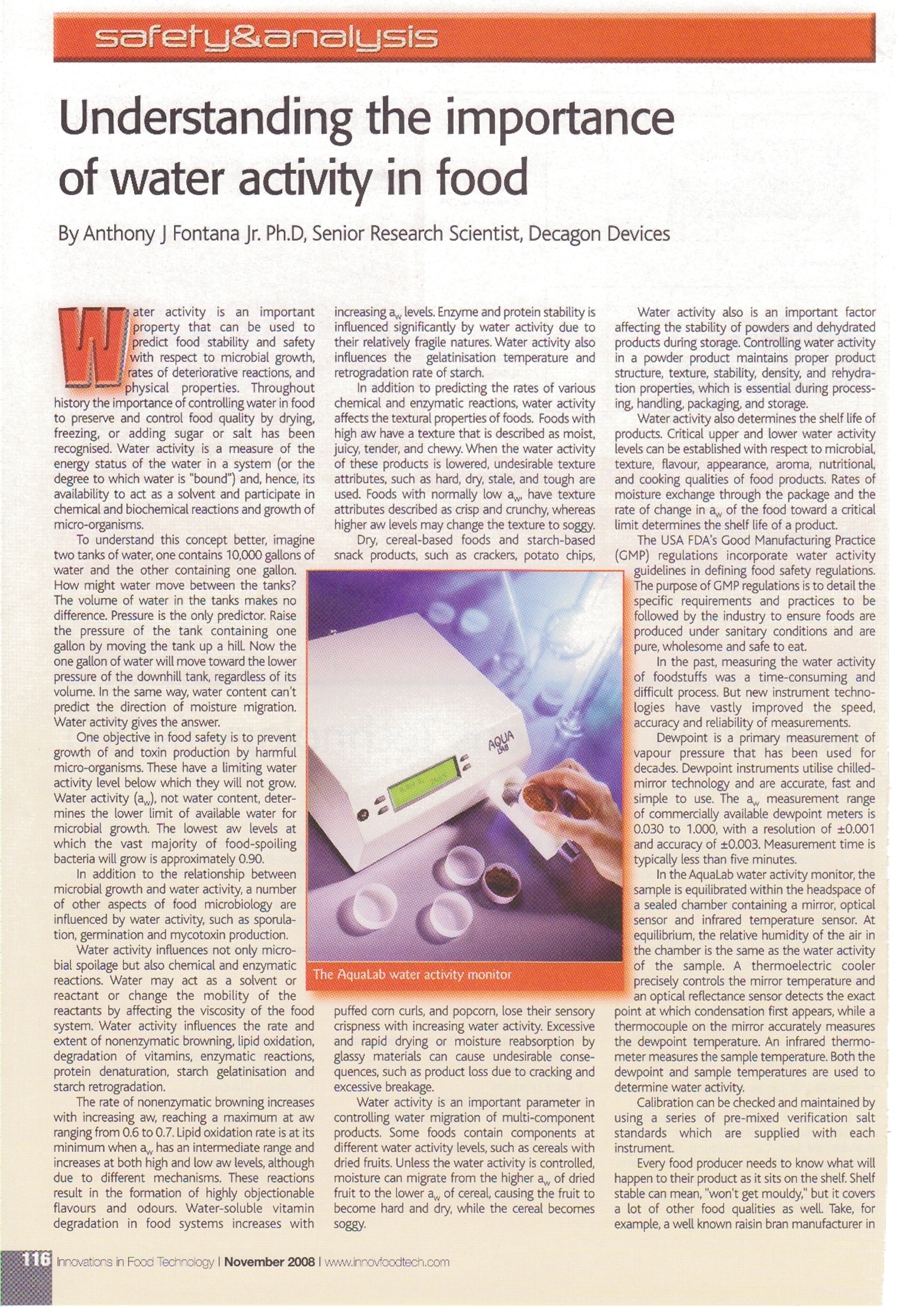
-
2/2
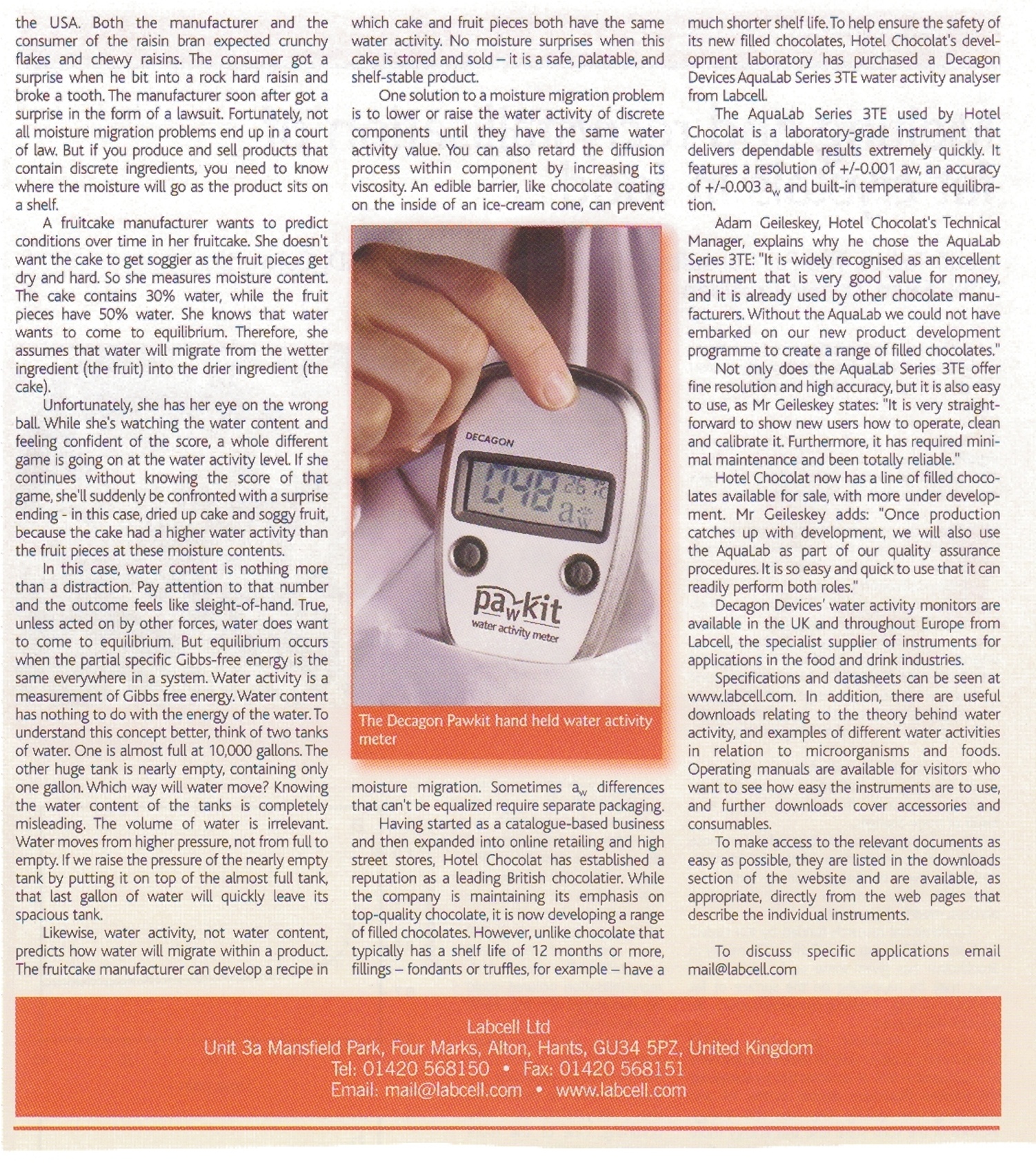
产品配置单
培安有限公司为您提供《食品中水活度的重要意义》,该方案主要用于糕点/月饼/粽子中其他检测,参考标准《暂无》,《食品中水活度的重要意义》用到的仪器有null。
我要纠错
相关方案


 咨询
咨询